
It’s Africa Day! To celebrate, we’ve put together a baker’s dozen of under-the-radar books published by African authors during the 1960s.
Why the 1960s? Well, because Africa Day was first instituted on May 25, 1963, so we thought this moment would be a good opportunity to cast an eye back to that decade in terms of books published.
Why under-the-radar books? Well, because even though the 1960s saw the publication of a number of canonical African texts including, of course, novels like Things Fall Apart and A Grain of Wheat, there was in fact a whole bunch of great writing being published during then, so we thought we’d shine some light on these books.
Of course, some of these books were award-winners in their time, so in that sense, they can hardly be called “under-the-radar.” But arguably, they aren’t the texts that immediately come to mind when you think of African literature published in the 1960s.
We selected texts by authors from 13 different countries that were written in English or are at least available in English translation. A number of them were published as part of the Heinemann African Writers Series — a testament to the legacy of the series. And while you may have heard of some of these authors, we’ve also chosen to focus on their lesser-known works.
The list is arranged chronologically by date of publication. Overall, we hope it gives you an idea of the vibrancy and plenitude of African writing during the 1960s.
1. The Open Door, by Latifa al-Zayyat (1960, trans. Marilyn Booth, 2000)
 Al-Zayyat’s preoccupation with championing the rights of the dispossessed began in her undergraduate days at Cairo University, and one of the central concerns in her oeuvre is the connection between the liberation of women and national liberation. The Open Door, al-Zayyat’s first novel, addresses this concern directly. The novel’s protagonist, Layla, learns to divest herself from the patriarchal values of her family and Egyptian society against the backdrop of a growing Egyptian nationalism, achieving liberation at the same time as Egypt liberates itself from British and French neocolonialism with the nationalization of the Suez canal. The Open Door was awarded the inaugural Naguib Mahfouz Medal for Literature.
Al-Zayyat’s preoccupation with championing the rights of the dispossessed began in her undergraduate days at Cairo University, and one of the central concerns in her oeuvre is the connection between the liberation of women and national liberation. The Open Door, al-Zayyat’s first novel, addresses this concern directly. The novel’s protagonist, Layla, learns to divest herself from the patriarchal values of her family and Egyptian society against the backdrop of a growing Egyptian nationalism, achieving liberation at the same time as Egypt liberates itself from British and French neocolonialism with the nationalization of the Suez canal. The Open Door was awarded the inaugural Naguib Mahfouz Medal for Literature.
2. Children of the New World, by Assia Djebar (1962, trans. Marjolijn de Jager, 2005)
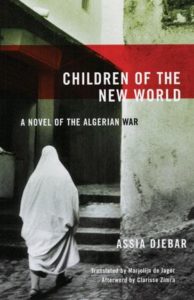
Djebar is one of Francophone Africa’s most distinguished writers, and she is perhaps best known for Fantasia: or an Algerian Cavalcade (1985), the first novel in an autobiographical tetralogy that explores feminist issues alongside anticolonial and national themes. These same concerns mark Children of the New World, Djebar’s third novel. The novel employs a variety of female perspectives — from wives, to students, to political organizers — to recount the role of women in the Algerian fight for independence. Unlike Frantz Fanon, who believed that the resistance efforts of women would gain them, upon national independence, the rights that colonial oppression had refused them, Djebar hints in this novel and others that the liberation of women still had a long way to go.
3. Luuanda: Short Stories of Angola, by José Luandino Vieira (1963, trans. Tamara L. Bender, 1980)
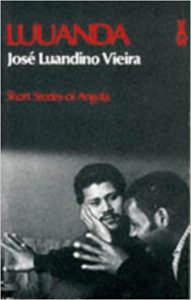 Vieria was born in Lisbon, but his family moved to Angola when he was a baby, and his childhood was spent on the outskirts of Luanda — the city in which most of his novels are set. His disillusionment with colonial settler values led to his involvement in nationalist politics and his eventual imprisonment for eleven years by the Portuguese. Luuanda was written during his stint in prison, and comprises three stories: “Grandma Xixi and Her Grandson Zeca Santos,” “The Tale of the Thief and the Parrot,” and “The Tale of the Chicken and the Egg.” The stories memorably capture the experiences and speech rhythms of the city, and Vieira was awarded the Angolan Literary Prize and the Portuguese Writers’ Society Prize for this work. The book, however, was banned by the Portuguese authorities for its negative depictions of colonial rule, and only became more widely available after the Carnation revolution in Portugal in 1974.
Vieria was born in Lisbon, but his family moved to Angola when he was a baby, and his childhood was spent on the outskirts of Luanda — the city in which most of his novels are set. His disillusionment with colonial settler values led to his involvement in nationalist politics and his eventual imprisonment for eleven years by the Portuguese. Luuanda was written during his stint in prison, and comprises three stories: “Grandma Xixi and Her Grandson Zeca Santos,” “The Tale of the Thief and the Parrot,” and “The Tale of the Chicken and the Egg.” The stories memorably capture the experiences and speech rhythms of the city, and Vieira was awarded the Angolan Literary Prize and the Portuguese Writers’ Society Prize for this work. The book, however, was banned by the Portuguese authorities for its negative depictions of colonial rule, and only became more widely available after the Carnation revolution in Portugal in 1974.
4. Two African Stories, by Abioseh Nicol (1965)
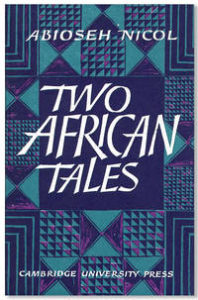 Abioseh Nicol was a Sierra Leonean doctor whose short stories generally focused on daily life under colonial rule and interactions between Africans and colonial administrators in Sierra Leone before independence. In this collection, Nicol focuses specifically on the political conflicts that emerge out of racial misunderstandings. This collection’s first story, “The Leopard Hunt,” explores the fallout following the death of an African subordinate who was killed during a hunt led by an European. The collection’s second story, “The Devil at Yolahun Bridge,” centers on a white colonial official’s discovery that the residential engineer is an African.
Abioseh Nicol was a Sierra Leonean doctor whose short stories generally focused on daily life under colonial rule and interactions between Africans and colonial administrators in Sierra Leone before independence. In this collection, Nicol focuses specifically on the political conflicts that emerge out of racial misunderstandings. This collection’s first story, “The Leopard Hunt,” explores the fallout following the death of an African subordinate who was killed during a hunt led by an European. The collection’s second story, “The Devil at Yolahun Bridge,” centers on a white colonial official’s discovery that the residential engineer is an African.
5. Voices in the Dark, by Leonard Kibera (1966)
 Kibera’s writing is typically understood as marked by his experience growing up during the Mau Mau rebellion, and his work typically characterized by an exploration of the failures of decolonization and the alienating effects of violence. In Voices in the Dark, which follows the story of Gerald Timundu, a playwright who claims to be an anti-capitalist but is nonetheless friends with the daughter of a tycoon and lives a middle-class life, Kibera uses modernist abstract language to treat the theme of disillusionment with constitutional freedoms — the novel’s fragmented sentences can be understood as Kibera’s attempt to convey the incompleteness of the project of national independence.
Kibera’s writing is typically understood as marked by his experience growing up during the Mau Mau rebellion, and his work typically characterized by an exploration of the failures of decolonization and the alienating effects of violence. In Voices in the Dark, which follows the story of Gerald Timundu, a playwright who claims to be an anti-capitalist but is nonetheless friends with the daughter of a tycoon and lives a middle-class life, Kibera uses modernist abstract language to treat the theme of disillusionment with constitutional freedoms — the novel’s fragmented sentences can be understood as Kibera’s attempt to convey the incompleteness of the project of national independence.
6. A Dream of Africa, by Camara Laye (1966, trans. by James Kirkup, 1971)
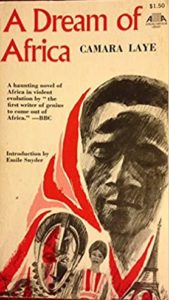 The Guinean author Camara Laye burst into the literary scene with the publication of The Dark Child in 1953. This novel follows the protagonist’s coming-of-age. A Dream of Africa, Laye’s third novel (The Dark Child was followed by The Radiance of the King, published in 1954), is a sequel to The Dark Child — the narrator, Fatoman, returns to Guinea from France to find it much changed. The dream referred to in the title is a dream Fatoman has in which he passes by a giant guarding a house with a high wall. When the giant tosses Fatoman up into the sky, Fatoman is able to see the many miserable prisoners contained within the walls. The giant, in other words, is an allusion to the growing tyranny of the postcolonial government. Like Kibera’s Voices in the Dark, then, A Dream of Africa is a novel that addresses the theme of disillusionment with the postcolonial nation state.
The Guinean author Camara Laye burst into the literary scene with the publication of The Dark Child in 1953. This novel follows the protagonist’s coming-of-age. A Dream of Africa, Laye’s third novel (The Dark Child was followed by The Radiance of the King, published in 1954), is a sequel to The Dark Child — the narrator, Fatoman, returns to Guinea from France to find it much changed. The dream referred to in the title is a dream Fatoman has in which he passes by a giant guarding a house with a high wall. When the giant tosses Fatoman up into the sky, Fatoman is able to see the many miserable prisoners contained within the walls. The giant, in other words, is an allusion to the growing tyranny of the postcolonial government. Like Kibera’s Voices in the Dark, then, A Dream of Africa is a novel that addresses the theme of disillusionment with the postcolonial nation state.
7. The Only Son, by John Munonye (1966)
 John Munonye was a friend and classmate of Chinua Achebe, and like Achebe, his novels deal with the disruptions to Igbo life and individuals brought about by modernization processes. The Only Son is his first novel, and tells the story of a widow who seeks out a Western-oriented education for her son, Nnanna, to lift him out their family poverty. While Nnanna’s eventual conversion to Christianity allows him to free himself from the grip of his mother, he also ends up being alienated from his community.
John Munonye was a friend and classmate of Chinua Achebe, and like Achebe, his novels deal with the disruptions to Igbo life and individuals brought about by modernization processes. The Only Son is his first novel, and tells the story of a widow who seeks out a Western-oriented education for her son, Nnanna, to lift him out their family poverty. While Nnanna’s eventual conversion to Christianity allows him to free himself from the grip of his mother, he also ends up being alienated from his community.
8. The Narrow Path, by Francis Selormey (1966)
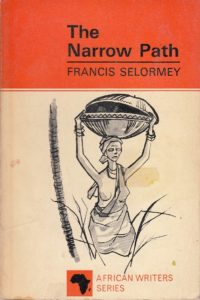 Not unlike Munonye’s The Only Son, Selormey’s The Narrow Path also focuses on the conflict between the traditionally African and the Western particularly around the points of education and religion. Nani is a teacher who sets himself apart from his fishermen siblings; not only does he think they are uneducated, he also disagrees with their paganism and polygamy. The narrow path referred to in the title of the novel is that which of obedience which Nani demands from his wife and children in an attempt to keep the family together, but unfortunately, it only results in the breaking up of his family.
Not unlike Munonye’s The Only Son, Selormey’s The Narrow Path also focuses on the conflict between the traditionally African and the Western particularly around the points of education and religion. Nani is a teacher who sets himself apart from his fishermen siblings; not only does he think they are uneducated, he also disagrees with their paganism and polygamy. The narrow path referred to in the title of the novel is that which of obedience which Nani demands from his wife and children in an attempt to keep the family together, but unfortunately, it only results in the breaking up of his family.
9. The Wound, by Malick Fall (1967, trans. Clive Wake, 1973)
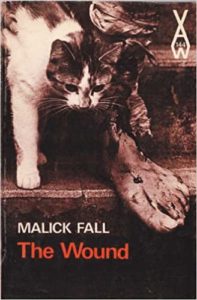 Not unlike Kibera’s Voices in the Dark and Camara Laye’s A Dream of Africa — along with other novels such as Ahmadou Kourouma’s The Suns of Independence (1968), Yambo Ouologuem’s Bound to Violence (1968), and Ayi Kwei Armah’s The Beautyful Ones Are Not Yet Born (1968) — the Senegalese author Malick Fall’s only novel can be understood as a work that deals with the theme of decolonization’s failures. The protagonist, Magamou, is left with a festering wound on his leg after an accident, and he becomes an object of repulsion yet attraction for the people at the market in which he finds shelter. He revels in the attention so much so that even after his wound heals, he deliberately wounds his leg again to regain the pity of the market folk. In suggesting that Magamou thus has no future apart from through suffering and is otherwise content to live out a wretched existence, Fall offers a critique of the hopelessness of the postcolonial condition.
Not unlike Kibera’s Voices in the Dark and Camara Laye’s A Dream of Africa — along with other novels such as Ahmadou Kourouma’s The Suns of Independence (1968), Yambo Ouologuem’s Bound to Violence (1968), and Ayi Kwei Armah’s The Beautyful Ones Are Not Yet Born (1968) — the Senegalese author Malick Fall’s only novel can be understood as a work that deals with the theme of decolonization’s failures. The protagonist, Magamou, is left with a festering wound on his leg after an accident, and he becomes an object of repulsion yet attraction for the people at the market in which he finds shelter. He revels in the attention so much so that even after his wound heals, he deliberately wounds his leg again to regain the pity of the market folk. In suggesting that Magamou thus has no future apart from through suffering and is otherwise content to live out a wretched existence, Fall offers a critique of the hopelessness of the postcolonial condition.
10. The Stone Country, by Alex la Guma (1967)
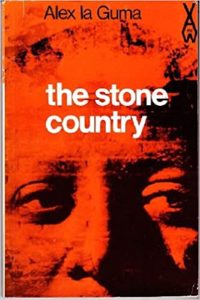 Alex la Guma is considered a master of the short story form, but he also published several novels. The Stone Country is his third work and technically his second novel (it was preceded by And a Threefold Cord, a novel published in 1964, and A Walk in the Night is really more a novella that was published alongside other stories in 1962). The Stone Country was la Guma’s last work to be completed wholly in South Africa before he went into exile in the UK, and was written while la Guma was under house arrest. It is largely autobiographical; set in a jail, it incorporates la Guma’s own experiences in prison and draws on his previous journalism about the degradations of prison life. La Guma depicts prison life as a mode of living subject to the “law of the jungle”; the novel’s protagonist, Adams, is unable to change his circumstances despite challenging the prison’s formal and informal systems of power. Like his previous two works, The Stone Country‘s setting symbolically represents South Africa as a police state, in which a small group of those in power control the majority through the “divide and rule.”
Alex la Guma is considered a master of the short story form, but he also published several novels. The Stone Country is his third work and technically his second novel (it was preceded by And a Threefold Cord, a novel published in 1964, and A Walk in the Night is really more a novella that was published alongside other stories in 1962). The Stone Country was la Guma’s last work to be completed wholly in South Africa before he went into exile in the UK, and was written while la Guma was under house arrest. It is largely autobiographical; set in a jail, it incorporates la Guma’s own experiences in prison and draws on his previous journalism about the degradations of prison life. La Guma depicts prison life as a mode of living subject to the “law of the jungle”; the novel’s protagonist, Adams, is unable to change his circumstances despite challenging the prison’s formal and informal systems of power. Like his previous two works, The Stone Country‘s setting symbolically represents South Africa as a police state, in which a small group of those in power control the majority through the “divide and rule.”
11. When Rain Clouds Gather, by Bessie Head (1968)
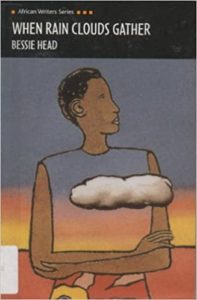 Bessie Head was born in South Africa but spent twenty years of her adult life in Botswana, which is where she began her authorial career. Disillusioned by, in her words, the “culture of hate” in South Africa under apartheid rule, Head elected to represent Botswana in this first novel of hers as an idyllic place where people lived in harmony together. When the Rain Clouds Gather recounts the story of an Englishman from South Africa who is exiled to a rural Botswana village, and his integration into the community there is Head’s articulation of her ideal of a peaceful coexistence among African peoples.
Bessie Head was born in South Africa but spent twenty years of her adult life in Botswana, which is where she began her authorial career. Disillusioned by, in her words, the “culture of hate” in South Africa under apartheid rule, Head elected to represent Botswana in this first novel of hers as an idyllic place where people lived in harmony together. When the Rain Clouds Gather recounts the story of an Englishman from South Africa who is exiled to a rural Botswana village, and his integration into the community there is Head’s articulation of her ideal of a peaceful coexistence among African peoples.
12. Orphan, by Okello Oculi (1968)
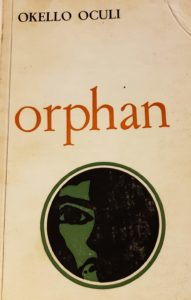 What scholars call the “song school” of poetry in East Africa is typically associated with the works of Okot p’Bitek, but Okello Oculi’s Orphan stands as an important contribution to this genre of writing. Like his fellow Ugandan’s Song of Lawino (1966), Orphan is a long dramatic poem that centers on the issue of cultural conflict, and the displacement of African culture brought about by modernity. The titular character’s status as an orphan can be understood as a representation of individual human isolation but also of Africa’s loss of its traditions — just like the Orphan, who is brought up not by his own mother but a stepmother, Africa, Oculi suggests, is separated from its maternal culture and brought up by strangers.
What scholars call the “song school” of poetry in East Africa is typically associated with the works of Okot p’Bitek, but Okello Oculi’s Orphan stands as an important contribution to this genre of writing. Like his fellow Ugandan’s Song of Lawino (1966), Orphan is a long dramatic poem that centers on the issue of cultural conflict, and the displacement of African culture brought about by modernity. The titular character’s status as an orphan can be understood as a representation of individual human isolation but also of Africa’s loss of its traditions — just like the Orphan, who is brought up not by his own mother but a stepmother, Africa, Oculi suggests, is separated from its maternal culture and brought up by strangers.
13. The Afersata, by Birhane-Mariyam Sahle Sellassie (1969)
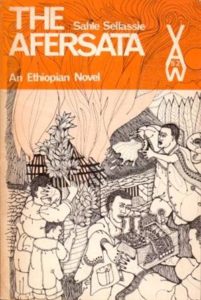 Sahle Sellassie is an author who has published in Amharic and English, but he is also the author of the first ever novel written in the Guragé language. The Afersata, though written in English, focuses on the Guragé people, and concerns the efforts of a villager, Namaga, to find out who burned down his hut. Namaga demands an Afersata, a traditional form of court in which every male member of a village is required to participate, and in which no one is allowed to leave until the criminal has been revealed. In following the proceedings, The Afersata offers insight into the lives of tenant farmers in Southern Ethiopia as well as as of the class and social relationships that made up feudal Ethiopian society.
Sahle Sellassie is an author who has published in Amharic and English, but he is also the author of the first ever novel written in the Guragé language. The Afersata, though written in English, focuses on the Guragé people, and concerns the efforts of a villager, Namaga, to find out who burned down his hut. Namaga demands an Afersata, a traditional form of court in which every male member of a village is required to participate, and in which no one is allowed to leave until the criminal has been revealed. In following the proceedings, The Afersata offers insight into the lives of tenant farmers in Southern Ethiopia as well as as of the class and social relationships that made up feudal Ethiopian society.
*research for this post was conducted with the help of the monumental Encyclopedia of African Literature (2002), edited by Simon Gikandi.


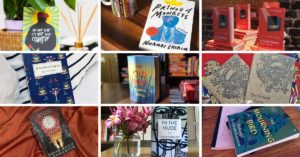
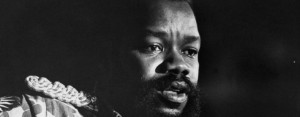


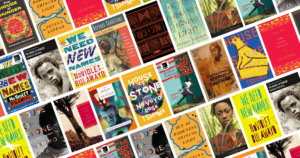

Jonathan December 18, 2020 06:14
None